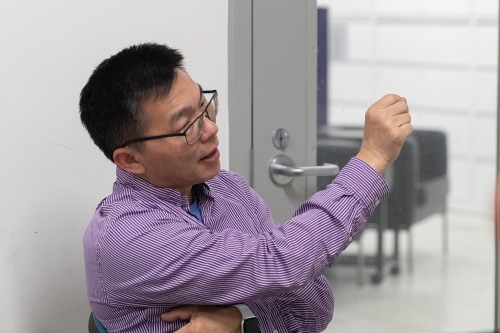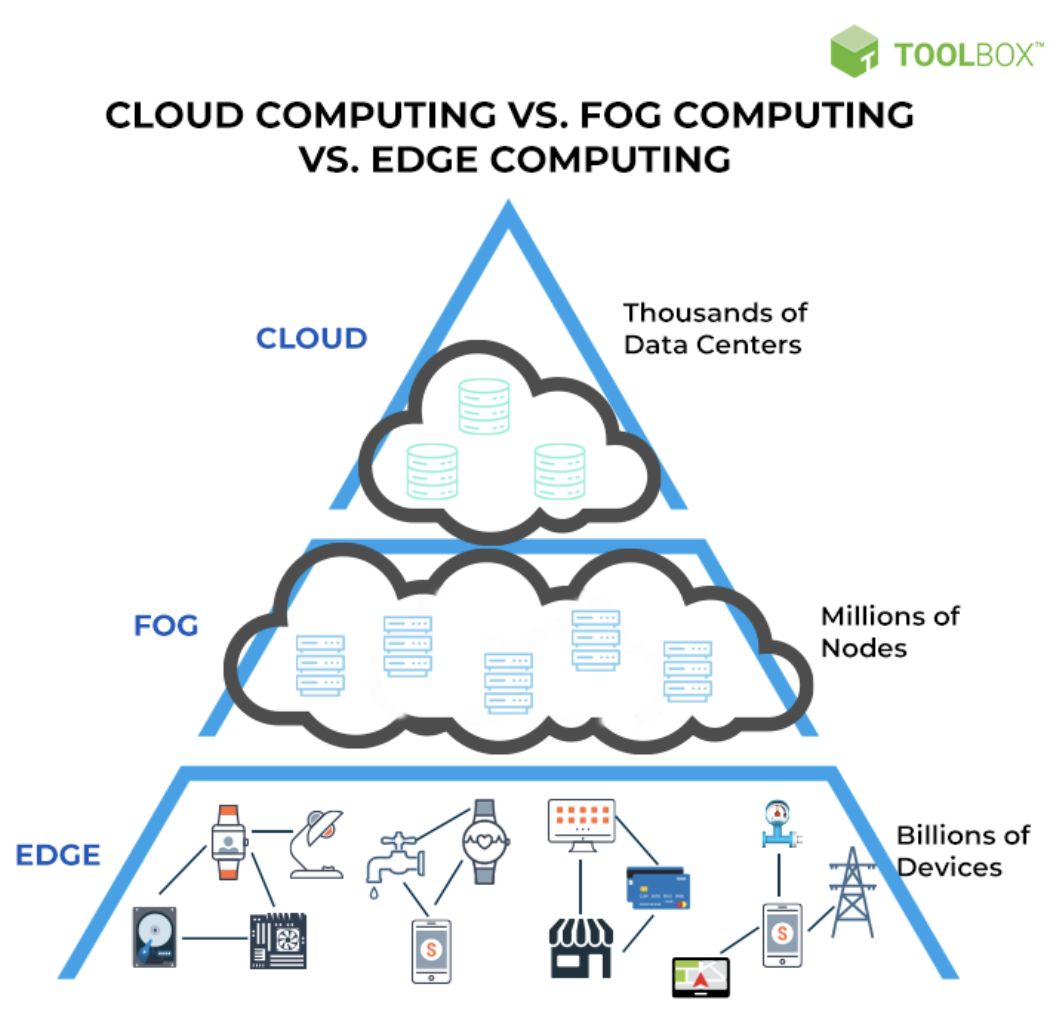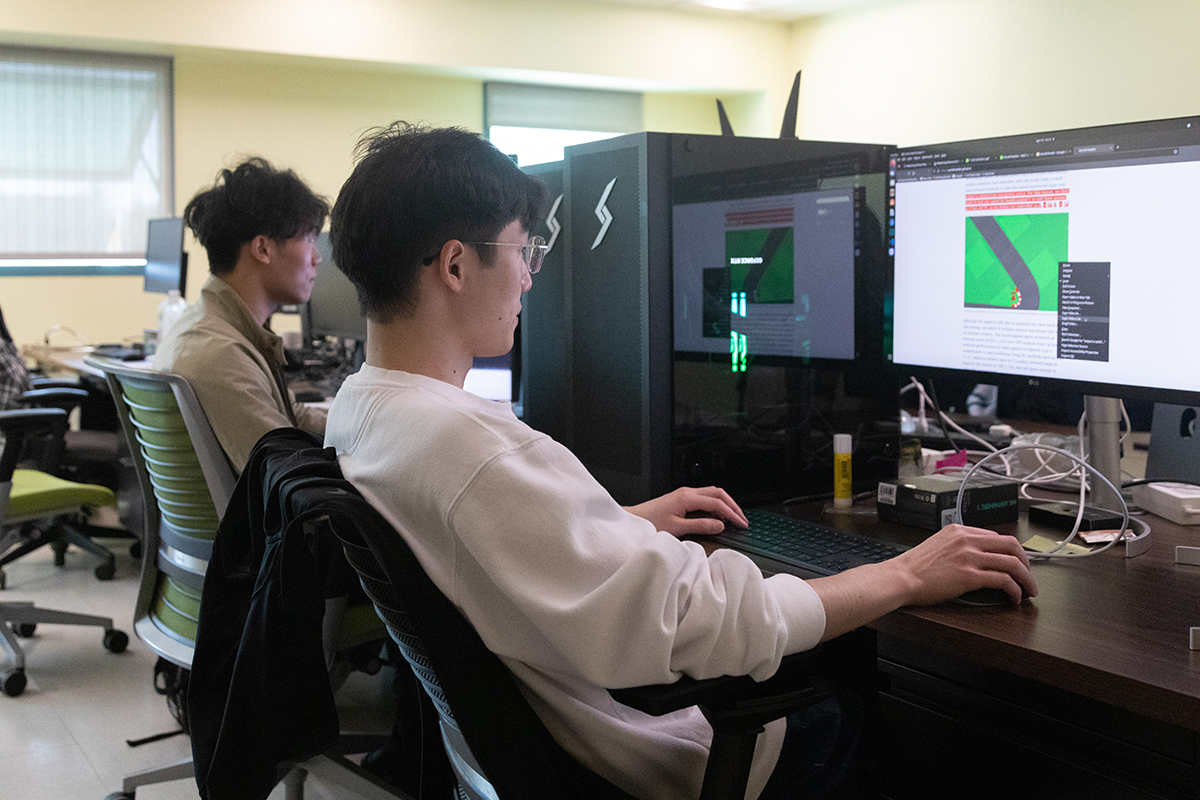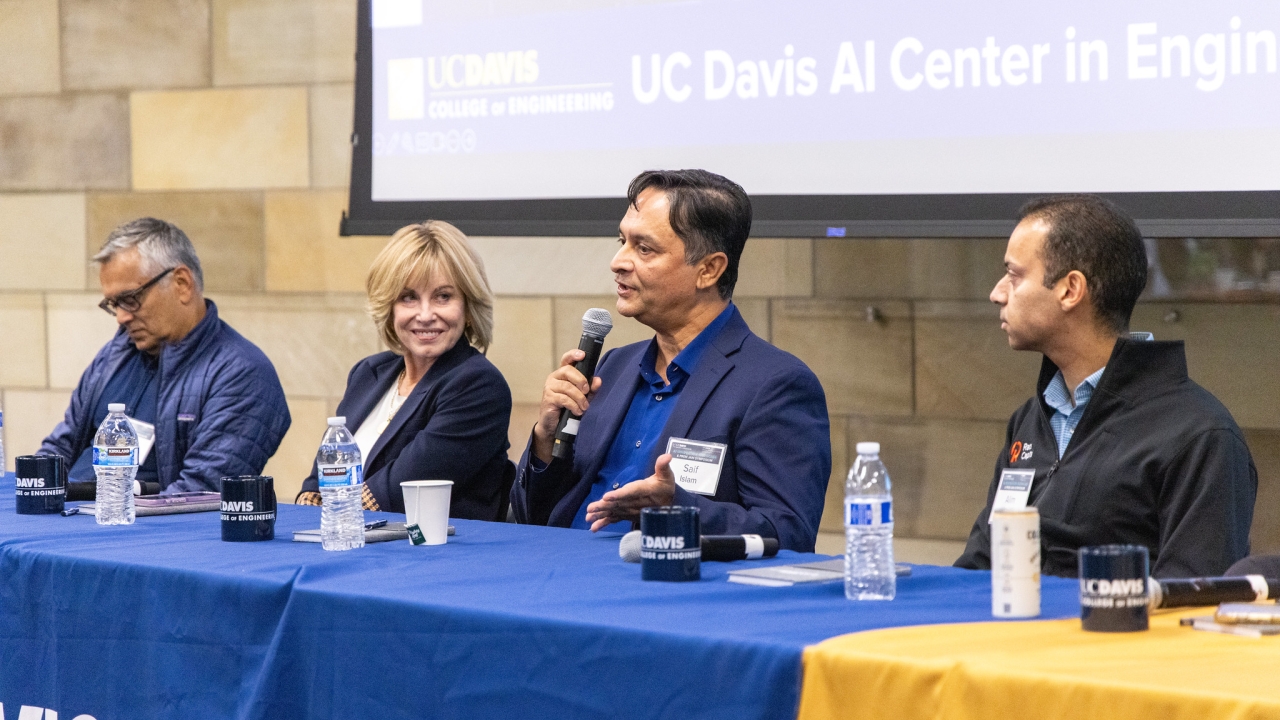
Computing on the Edge
You’re on a long road trip. You’re enjoying your favorite tunes as your self-driving car moves you down the road. Then suddenly, a driver going in the other direction swerves into oncoming traffic right at you.
Will the artificial intelligence, or AI, in the car have enough time to react and save you from a head-on crash?
The answer to that question is the nexus of the research of Junshan “Joshua” Zhang in the Department of Electrical and Computer Engineering.
A Need for Real-Time AI
Professor Zhang’s research falls in the general field of information networks and data science, specifically in state-of-the-art edge AI, reinforcement learning, and optimization and control of networked systems. He is exploring how to use networked systems and the Internet of Things, or IoT, to improve the data processing and AI decision-making capability on the edge of the object’s network.

“We are trying to push AI from the Cloud data center to the edge of the Internet,” Zhang said, “because there are so many new applications that require real-time intelligence where the decision-making has to be made right here, right now.”
Currently, AI model training relies on the Cloud for collecting, transferring and processing data. While this process is relatively fast in a historical context, it is far too slow for applications in some modern and future technological advancements, such as self-driving cars.
Edge computing and edge AI in particular, which is Zhang’s focus, moves the transfer and processing of data away from the Cloud and into the edge of the device’s network. With this technology, data are processed and transmitted to the device instantly. It also expands the network's capacity from thousands to millions. It is a complicated process that uses distributed and connected intelligence and wireless edge networks. Its application could transform the effectiveness of such things as automated vehicles, 5G (and beyond) wireless networks, IoT, and 'the smart grid.'
Thinking Ahead
Zhang is one of the first in the world to pursue this type of research and has been credited as being a pioneer of transactional networks and fog computing. (Fog computing is the layer of computing that resides between the Cloud and edge computing.) He is a fellow of the Institute of Electrical and Electronics Engineers, the world's largest technical professional organization dedicated to advancing technology for the benefit of humanity, and has won numerous best paper awards from the organization for his work.
He started working in the field about 10 years ago in his lab at Arizona State University. He was working on 5G wireless networks and smartphones at the time when he saw an opportunity to both make use of the research available at the edge of the internet and optimize communications and computing across the edges of networks.
“We were trying to think ahead,” Zhang said. “We found there was an urgency to help build a foundation for edge AI.”
From the Cloud to Fog to the Edge
In 2015, he helped establish OpenFogConsortium — a public-private ecosystem formed to accelerate the adoption of fog computing to solve the bandwidth, latency and communications challenges associated with IoT. Other founding partners included Cisco, Dell, Intel, Microsoft and Princeton University Edge Computing Laboratory.

Together with Mung Chiang and Kaushik Pillalamarri, he then co-founded Smartiply, Inc., a Fog/edge computing company to boost network connectivity and embedded real-time edge intelligence for IoT applications, which was sold to Wistron AiEdge Corporation in 2020.
His work focused on fog/edge computing, after seeing an explosion in the number of IoT devices, which demanded more instantaneous data transfer. In 2015, around the time that Zhang entered the field, there were 3.6 billion IoT devices; in 2021, there were 12.2 billion; by 2025, that figure is expected to grow to anywhere between 27 to 41.6 billion according to the International Data Corporation.
“So, there is a big need to push AI from the Cloud to the edge,” he said. “The question is, how do we do it? There are still many exciting, open problems for us to explore. We’ve been working very, very hard on that.”
Driven to Davis
Zhang came to UC Davis in 2021, having worked for 20 years at Arizona State University. Zhang said he was motivated to make the move because of the caliber of colleagues in the College of Engineering and at the UC Davis Institute of Transportation Studies, which is the leading university center in the world on sustainable transportation.
“I think there is a strong synergy between the College of Engineering and the Institute of Transportation Studies and there is great potential for us to collaborate to do something bigger,” he said. “Personally, I believe self-driving is the next big technology wave.”
MoSAIC
For the past year, Zhang has been working with colleagues in the College of Engineering and ITS to advance a strategic goal of both groups: transforming mobility. They recently submitted an NSF proposal to build a center called MoSAIC, which stands for Mobility Science Automation and Inclusion Center. The Center’s goal is to advance transportation mobility that is focused on safety, equity and sustainability.
“Beyond the acronym, there is a deep philosophical meaning behind the name of MoSAIC,” he said. “We are trying to bring together experts from different domains and different areas across campus and the nation to build sustainable mobility technology.”
Zhang emphasized the importance automated vehicles can play in improving diversity, equity and inclusion in society. Improvements to self-driving technology will open opportunities for more people who currently are unable to drive, including older adults.
Multifaceted Challenges
The collaborative center of MoSAIC is needed because issues around improving autonomous transportation are multifaceted. For example, even when automated vehicles do take root more prominently in society, there will be a transition period where both human and automated vehicles are on the road. Researchers must therefore create AI models that can perceive an environment, make a prediction, plan a trajectory and then execute a plan that is in reaction to any litany of scenarios, and do so all in the blink of an eye.

“So, one of the questions we are working to solve is, how can we ensure safety in a mixed autonomy driving environment, where there is the interplay between human decision-making and machine decision-making?” Zhang said, adding that having consistent wireless connectivity among automated vehicles is also another challenge they are working through.
The opportunity to build MoSAIC at UC Davis, as well as the chance to collaborate with neighboring technology and automotive companies in the Bay Area, excites not only Zhang, but his other colleagues from Arizona State University as well. Multiple members of his lab team from ASU followed him to UC Davis.
“We are working on AI at the edge, and this is very, very challenging,” Zhang said. “There is still a lack of deep understanding. But, the things we don’t understand, those are the things that we are working on that are most exciting.”




